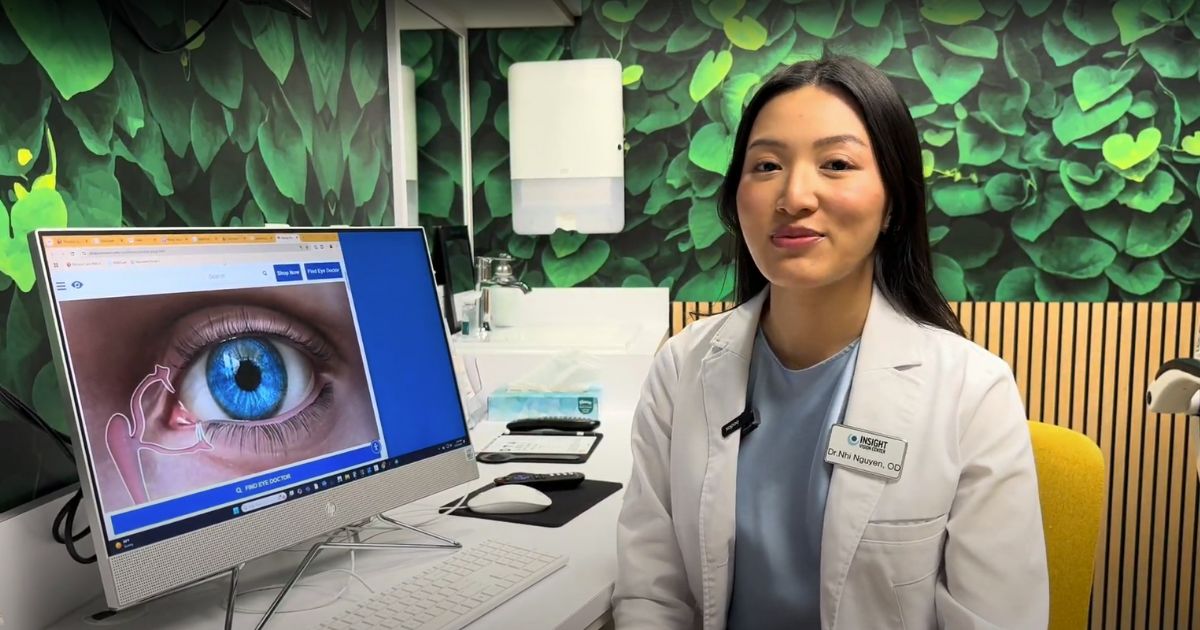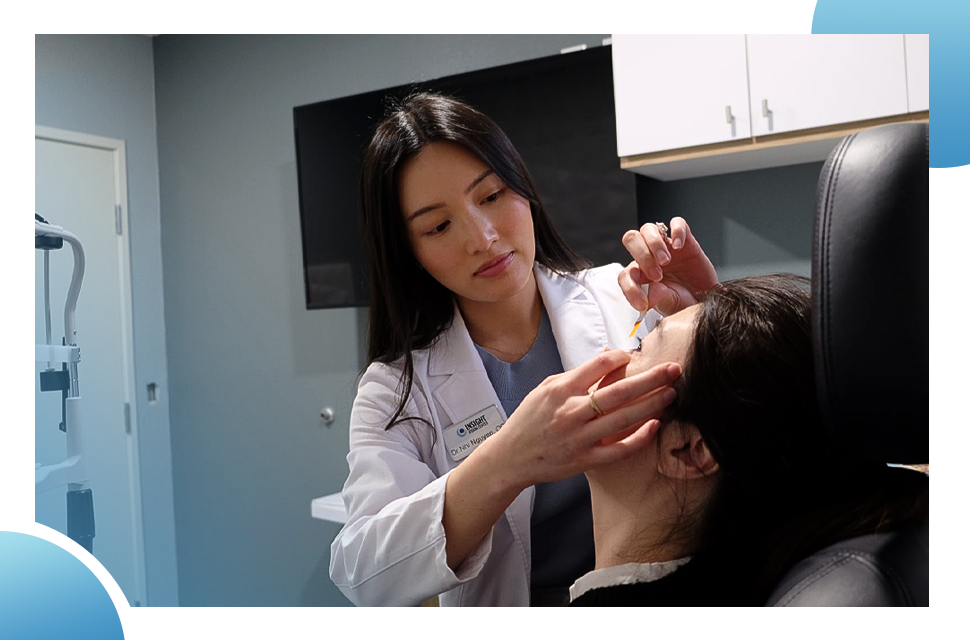
Caffeine has long been celebrated as a daily boost to wakefulness and energy, but recent research also suggests it might influence dry eye syndrome by enhancing tear production. Studies indicate that even though caffeine is known as a diuretic, its effect on tear secretion could be beneficial for those experiencing dry eyes. In this article, we explore how caffeine impacts dry eye syndrome.
What Is Dry Eye Syndrome?
Dry eye syndrome is a condition where the eyes do not produce or retain quality tears to remain well-lubricated, causing discomfort and irritation. This condition is multifactorial, meaning that several elements can contribute to its onset, such as environmental factors, hormonal changes, and even medication side effects. Patients often report symptoms including redness, a gritty or burning sensation, blurred vision, and sensitivity to light.
Tears are essential for eye health, providing lubrication, nourishment, and protection through a balance of water, mucus, and fatty oils. When this balance is disrupted—whether due to insufficient production or rapid evaporation—it can lead to dry eye syndrome. Proper tear function ensures comfort, clear vision, and defense against irritation and infection.
How Caffeine May Influence Tear Production
There is growing interest in the potential of caffeine to influence tear production. Several studies have shown that consuming caffeine can lead to an increase in tear secretion, which may help mitigate the symptoms of dry eye by improving lubrication on the ocular surface.
Research indicates that caffeine can stimulate the lacrimal glands, increasing the amount of water in the tear film. This stimulation appears to help counteract one of the common causes of dry eye, which is the insufficient production of quality tears. In some controlled studies, participants who consumed caffeine demonstrated increased tear meniscus height, indicating a higher volume of tears on the eye’s surface.
Interestingly, the relationship between caffeine consumption and tear production may also be influenced by genetic factors. Specific genetic polymorphisms related to adenosine receptors and cytochrome P450 enzymes have been shown to affect the degree of tear increase after caffeine intake.

Laboratory studies suggest that caffeine might help reduce inflammatory responses on the ocular surface, offering additional relief for dry eye sufferers.
Although these factors may play a role, the overall impact of caffeine on tear production and inflammation is generally considered modest and supportive rather than transformative. It is important to note that caffeine is not a standalone treatment for dry eye syndrome.
Caffeine Consumption: A Balancing Act
Understanding the right amount of caffeine is crucial, as both too little and too much can have different implications for dry eye syndrome. For many, a moderate consumption of caffeine can support a modest increase in tear production, yet excessive intake might lead to unwanted side effects such as jitters, irritability, and even insomnia. This should not be taken lightly, as poor sleep has been shown to increase dry eye symptoms, possibly through increased stressed that reduces tear production. Moreover, although caffeine is known as a diuretic, the hydration effects from drinking caffeinated beverages like coffee often outweigh any minimal dehydrating impact. In short, caffeine plays a complicated role both potentially positive and negative in relation to dry eye syndrome.


The Impact of Caffeine on Dry Eye in Specific Conditions
Not all cases of dry eye syndrome are the same, and the impact of caffeine can vary depending on the underlying cause. For instance, dry eye resulting from inadequate tear production might benefit from the tear-stimulating effects of caffeine. Conversely, conditions like blepharitis, which involve inflammation and dysfunction of the oil-producing meibomian glands, may not see as much benefit from caffeine intake.
Caffeine in the Context of a Healthy Lifestyle
For patients managing dry eye syndrome, lifestyle modifications can make a significant difference. While caffeine may offer some benefit, it is equally important to adopt other healthy habits that support overall eye health. These include staying well-hydrated, maintaining a balanced diet rich in omega-3 fatty acids, and managing screen time effectively.

Understanding Research Findings on Caffeine and Dry Eye
Numerous studies have investigated the connection between caffeine and dry eye, yielding a mix of findings that contribute to our understanding of this relationship. While some research suggests that caffeine may help increase tear production, other studies have indicated a slightly elevated risk of symptomatic dry eye with high caffeine consumption, particularly when combined with factors like stress and inadequate sleep.

Practical Advice for Patients
If you enjoy your daily cup of coffee and are concerned about dry eye syndrome, the evidence suggests that moderate caffeine consumption is generally safe and might even offer some benefits for tear production. It is important to remember that dry eye is a complex condition influenced by many factors, so focusing on overall lifestyle and eye care habits is key.


Bringing It All Together
The relationship between caffeine and dry eye syndrome is nuanced, with evidence suggesting that moderate caffeine consumption can enhance tear production and potentially provide relief for dry eye symptoms. While caffeine may offer benefits, especially by stimulating the lacrimal glands to produce more tears, it is not a cure-all for dry eye. The multifactorial nature of dry eye means that factors such as environmental irritants, digital eye strain, hormonal changes, and even genetic predispositions all play a role in the condition.
For most individuals, enjoying a cup of coffee in moderation is unlikely to exacerbate dry eye symptoms and may even contribute to improved tear stability. However, if you find that your symptoms are severe or that your caffeine intake is very high, it might be worthwhile to adjust your habits in consultation with our eye doctors. They can help determine whether your caffeine consumption is a contributing factor or if other aspects of your lifestyle need more attention.
Caffeine should be viewed as one small component of a comprehensive dry eye strategy. Whether you are dealing with dry eye from a lack of tear production or as part of a broader ocular surface condition, a dry eye evaluation is the start to identifying the cause and treatment strategy that will be most effective.


Experience Relief from Dry Eye Today! Visit Orange County’s Top Rated Specialty Eye Care Center
Dry eye is a multifactorial condition influenced by age, hormones, medications, eyelid structure, environmental factors, and underlying health conditions. Each of these elements can disrupt the delicate balance of tear production and evaporation, leading to discomfort and potential long-term damage to the eye’s surface. At Insight Vision Center Optometry, we provide advanced, personalized dry eye treatments to help patients across Irvine, Costa Mesa, Newport Beach, and all of Orange County, reclaim clear, comfortable vision.
With a 4.9-star rating from 600+ reviews, our patients trust us for compassionate, expert care in a welcoming environment. Whether you need specialty eye drops, in-office treatments, or custom-tailored solutions, we’ll find the right approach to restore your eye health and comfort.
You don’t have to live with dry, irritated eyes. Schedule your appointment today and take the first step toward lasting relief. Call us or book online now!
Call us at (714) 942-1361 to book your appointment, or schedule online.





